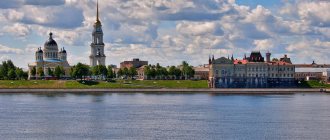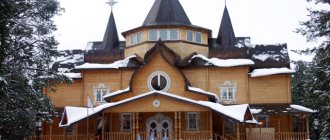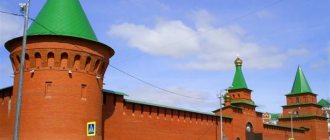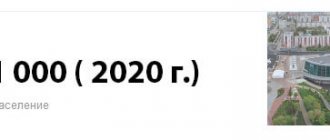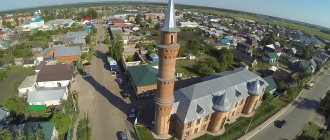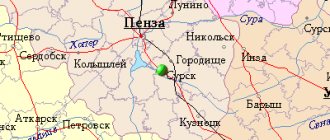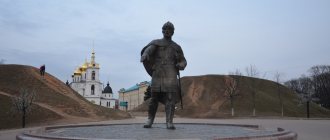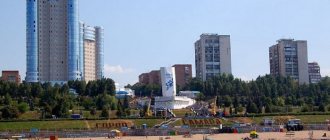The famous sculpture “The Motherland is Calling!” belongs to the tallest statues in the world. It surpassed all known sculptures created by human hands for 22 years. Today it is difficult to find a person who has not seen “Motherland” - even in images.
This monument has become a symbol of the Great Patriotic War and the valor of the people, and for foreigners the association of this sculpture and Russia is quite typical. But if the essence of the statue is quite clear, then not many people know its history. Did you know that “The Motherland is calling!” – is this part of a sculptural triptych? When did the idea come about to create a statue that would become a hymn to the valor of the defenders of Stalingrad? What is the history of sculpture?
History of creation
The courage shown by Soviet soldiers during the defense of Stalingrad, as well as the victory in the Battle of Stalingrad, became a decisive moment during the Great Patriotic War. A competition for the creation of the monument was announced back in 1944. Anyone could participate in it.
Both eminent architects and soldiers who participated in the battle sent their sketches embodying the idea of defending Stalingrad. The plans were very different. For example, Andrei Burov’s proposal was to create a 150-meter pyramid with melted down tanks in the upper part.
The choice of location for the monument is symbolic - for the whole world, the defense of Stalingrad became an example of the unsurpassed heroism and courage of the Soviet soldier / © G. Zelma, 1942,
It’s hard for me to imagine how difficult the task was to select one proposal from a whole sea of very different (and often wonderful) ideas. As a result, the work of sculptors Evgeniy Vuchetich and Nikolai Nikitin was chosen.
By the way, the sculpture was originally supposed to look a little different. According to the sculptors' plan, it depicted a woman, the Motherland, to whom the kneeling soldier gave his sword. However, it was decided to change the essence of the composition. By that time, the war had not yet ended, and therefore it was not worth giving up the sword.
A sword raised high represents strength and readiness to fight the enemy.
Fountain with the sculpture “Evolution”
On Enthusiasts Boulevard, among the many fountains, this one stands out. Not all townspeople understood the author's idea. To many, the fountain seemed somewhat strange.
But when the authorities decided to remove the composition from city streets, residents of Naberezhnye Chelny stood up to defend this work of art. The fountain remained in its place.
People debate what this unusual composition means. Perhaps you will be the one to solve this mystery?
Features of the statue
However, construction of the monument began only in 1959. Scaffolding was installed on the mound in front of Stalingrad (now Volgograd), and an embankment was created, on which the “Motherland” was to subsequently appear. However, the creation process lasted eight long years.
It is believed that the source of inspiration for the creation of the famous sculpture for Yevgeny Vuchetich was the bas-relief “Marseillaise” on the Arc de Triomphe in Paris. In addition, there is a noticeable similarity between the “Motherland” and the famous ancient statue of the Nike of Samothrace.
Francois Rud Bas-relief "La Marseillaise" on the Arc de Triomphe, 1836, Paris, France
It is unknown from whom the sculptors sculpted their great statue. Presumably the figure was based on Nina Dumbadze, a Soviet athlete, but the face of the “Motherland” is very reminiscent of the appearance of Vuchetich’s wife.
There were many difficulties associated with the construction process. One of them lay in the peculiarities of the material from which the statue was created. “The Motherland is calling!” - the first reinforced concrete sculpture. Of course, reinforced concrete was one of the cheapest materials, but it was not durable.
Just a year after the creation of the monument, microcracks began to appear, which threatened to destroy the result of eight years of work by the sculptors in a short period of time. Because of this, the sculpture began to be generously coated with a water-repellent compound every year.
Pythocritus “Nike of Samothrace”, c.190 BC. Location: Louvre, Paris, France
“The Motherland is calling!” in numbers
About sculpture in numbers:
- height with a sword - 85 m, without it - 52 m;
- sword length - 33 m;
- sword weight - 14 tons;
- the total weight of the statue is about 8,000 tons, of which 5,500 tons are concrete, and 2,400 tons are metal structures;
- the thickness of the walls of the statue is 25-30 cm;
- foundation height - 16 m;
- pedestal height - 2 m;
- the initial height of the embankment for installing the statue on the mound is 14 m;
- over 8 years (from 2000 to 2008), the deviation of the monument from the axis was 16 mm.
the Motherland statue
Part of a triptych
“The Motherland is calling!” was included in the Guinness Book of Records as the tallest (at that time) sculpture created by human hands. For comparison: the famous monument dedicated to the Battle of Stalingrad is two and a half times taller than the Statue of Liberty. At the same time, not everyone knows that “Motherland” became the second creation in the triptych.
Sculptor Lev Nikolaevich Golovnitsky, architect Yakov Borisovich Belopolsky “Rear to Front”, 1979 Location: Magnitogorsk, Russia
The first among the sculptures was “Rear to Front”, installed in Magnitogorsk. And the completion of the triptych was the sculpture “Warrior-Liberator”, installed in Berlin’s Treptower Park.
I want to draw attention to the sword in each of these creations. According to the plan, the symbol of struggle and freedom was forged in the Urals, after which it ended up in the hands of the “Motherland”, which raised it at the height of the war, and the sword is lowered by a Soviet soldier who reached Berlin.
Sculptor Evgeny Viktorovich Vuchetich, architect Yakov Borisovich Belopolsky “Warrior-Liberator”, 1949 Location: Treptow Park, Berlin, Germany
Business-
The tallest building in Naberezhnye Chelny, one of the main attractions of the city. The height of the building is 81 meters, the number of floors is 24. Without the skyscraper “2.18” it is difficult to imagine the architectural appearance of Naberezhnye Chelny.
Go up to the roof. There is an observation deck here. City blocks and terrain right up to the banks of the Kama River are visible.
The original design appeared in the city thanks to the help of foreign investors. The skyscraper was commissioned in 2005. Now the offices of the largest Russian and foreign companies are located here.
Description of the monument
But let's take a closer look at the sculpture “The Motherland is Calling!” Undoubtedly, this is one of the most striking allegorical images in the history of sculpture. The homeland is represented here in the guise of a tall, stately woman raising a sword. She seems to be walking towards us. Her body is slightly turned back, and her left hand is also directed there in an inviting gesture. She really calls her sons to fight the enemy.
The determination and belligerence of the “Motherland” is also indicated by the expression on her face. The mouth is slightly open, as if in a call to attack, and the eyebrows are sternly knitted. But the main “highlight” of the sculpture is the dynamics, which are conveyed by clothes and hair fluttering in the wind.
Antique motifs can be traced in the folds of fluttering clothes
The sculptors masterfully conveyed this part of the composition. In my opinion, in the drapery of the clothes, in their apparent lightness, one can notice antique motifs, which probably inspired the creators.
The high-raised sword of the statue represents struggle and strength. It was not for nothing that the figure of a woman, rather than a soldier, was installed at Stalingrad. The warrior-defenders were truly raised to battle by the Motherland, for which they fought and gave their lives - in the name of the happy future of their descendants.
Sculptor Evgeniy Viktorovich Vuchetich, engineer Nikolai Vasilyevich Nikitin “The Motherland is calling!” , 1959-1967 Location: Volgograd, Russia
And finally, I would like to cite an interesting fact about the sculpture “The Motherland is Calling!” Inside it is a hollow structure. All parts are held in place only by the tension of the cables. At the same time, there are no external fastenings to the base on which it stands. “Motherland” is supported solely by its own weight. But the cables are equipped with sensors, the indicators of which are monitored by specialists. As you can see, this sculpture combines not only the memory of the past, but also modern technology.
Art Gallery
A branch of the State Museum of Fine Arts opened in Naberezhnye Chelny in 1980. The collection is based on original folk art objects and paintings by famous masters.
There is a children's art studio at the museum. Meetings with talented artists of Tatarstan are held regularly.
Address: ave. Mira, 52/16.
Museum of History and Military Glory of Automotive Troops
The idea of creating this exposition belongs to DOSAAF KAMAZ. A large collection clearly shows how automobile troops were created and what the first military vehicles were like.
Photographs, documents, models of military equipment, historical relics donated by the military are presented. Some of the exhibits tell about the feat of Afghan drivers.
Address: st. Nizametdinova, 26.
It is impossible to imagine the second most populous city in Tatarstan without city churches and mosques. People of different religions coexist peacefully here.
Explore places of worship of different religious communities. Among the temples and mosques there are many ancient monuments.
Temple of Cosmas and Damian
The oldest city building appeared in Naberezhnye Chelny in 1859. Architect Konstantin Ton has created another masterpiece.
The temple, whose appearance contains Byzantine and pseudo-Russian motifs, existed until the mid-30s. The Bolsheviks stopped worship services and organized a warehouse on the premises.
Over sixty years of operation, the walls of the temple have become dilapidated. The townspeople took up the task of saving the spiritual monastery. After the restoration, new buildings were added to the temple. Now this majestic structure is a decoration of Naberezhnye Chelny.
Address: ave. Naberezhnye Chelninsky, 37a.
